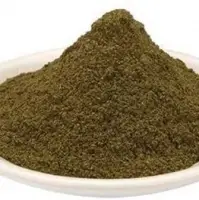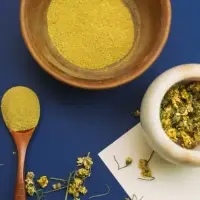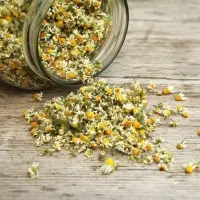
Edible oils like palm oil, wood chips, frozen chicken, copper cathodes, soybean, used cooking oil, uco.
Organic and inorganic chemicals, calcium carbonate all kinds of salts such as rock, himalayan, bathing, table, black, kosher, flake, red hawaiian and pickling salt etc. petrochemicals (polyethylene, polypropylene and polymers etc.), agrochemicals ( fertilizers such as dap, urea 46 etc.), pesticides and herbicides etc.), agricultural foods & commodities such as wheat flour, millets, other flours, onion , potato, tomato and apples, banana, guava, mango, rice bran, rice husk, lentils and pulses, non basmati & basmati rice items such as carpets and rugs used in home and offices, handicraft items and paper cups and corrugated boxes..
In Laos, (it known as pak i tou, lemon basil is used extensively in soups, stews, curries and stir-fried dishes as it is the most commonly used type of basil in Laos. Many Lao stews require the use of lemon basil as no other basil varieties are acceptable as substitutes. The most popular Lao stew called or lam uses lemon basil as a key ingredient. Lemon basil is the only basil used much in Indonesian cuisine, where it is called kemangi. It is often eaten raw with salad or lalap (raw vegetables) and accompanied by sambal. Lemon basil is often used to season certain Indonesian dishes, such as curries, soup, stew and steamed or grilled dishes. In Thailand, Lemon basil, called maenglak (Thai, is one of several types of basil used in Thai cuisine. The leaves are used in certain Thai curries and it is also indispensable for the noodle dish khanom chin nam ya. In the Philippines,where it is called sangig, particularly in Cebu and parts of Mindanao, Lemon basil is used to add flavor to Law-uy, which is an assortment of local greens in a vegetable-based soup. The seeds resemble frog's eggs after they have been soaked in water and are used in sweet desserts. It is also used in North East part of India state Manipur. In Manipur, it is used in curry like pumpkin, used in singju (a form of salad), and in red or green chilli pickles. The Garo, Khasi and Jaintia tribe of Meghalaya also use it in their cuisine. The Garos call it Panet (pronounced Phanet). They use it to prepare cold sauce (Ind. Chutney) with added ingredients like fermented fish, chilly, onions sometimes roasted tomatoes.
Stinging nettle redirects here. For the Australian plant, see Urtica incisa. For other plants that sting, see Stinging plant with stinging hairs. Urtica dioica, often known as common nettle, stinging nettle (although not all plants of this species sting) or nettle leaf, or just a nettle or stinger, is a herbaceous perennial flowering plant in the family Urticaceae. Originally native to Europe, much of temperate Asia and western North Africa, it is now found worldwide, including New Zealand and North America. The species is divided into six subspecies, five of which have many hollow stinging hairs called trichomes on the leaves and stems, which act like hypodermic needles, injecting histamine and other chemicals that produce a stinging sensation upon contact (contact urticaria, a form or contact dermatitis). The plant has a long history of use as a source for traditional medicine, food, tea, and textile raw material in ancient societies.
Stinging nettle redirects here. For the Australian plant, see Urtica incisa. For other plants that sting, see Stinging plant Plants with stinging hairs. Urtica dioica, often known as common nettle, stinging nettle (although not all plants of this species sting) or nettle leaf, or just a nettle or stinger, is a herbaceous perennial flowering plant in the family Urticaceae. Originally native to Europe, much of temperate Asia and western North Africa, it is now found worldwide, including New Zealand and North America. The species is divided into six subspecies, five of which have many hollow stinging hairs called trichomes on the leaves and stems, which act like hypodermic needles, injecting histamine and other chemicals that produce a stinging sensation upon contact contact urticaria a form or contact dermatitis). The plant has a long history of use as a source for traditional medicine, food, tea, and textile raw material in ancient societies.
Stinging nettle redirects here. For the Australian plant, see Urtica incisa. For other plants that sting, see Stinging plant Plants with stinging hairs. Urtica dioica, often known as common nettle, stinging nettle (although not all plants of this species sting) or nettle leaf, or just a nettle or stinger, is a herbaceous perennial flowering plant in the family Urticaceae. Originally native to Europe, much of temperate Asia and western North Africa, it is now found worldwide, including New Zealand and North America. The species is divided into six subspecies, five of which have many hollow stinging hairs called trichomes on the leaves and stems, which act like hypodermic needles, injecting histamine and other chemicals that produce a stinging sensation upon contact (contact urticaria, a form or contact dermatitis). The plant has a long history of use as a source for traditional medicine, food, tea, and textile raw material in ancient societies.
Matricaria chamomilla (synonym: Matricaria recutita), commonly known as chamomile (also spelled camomile), Italian camomilla, German chamomile, Hungarian chamomile (kamilla), wild chamomile or scented mayweed, is an annual plant of the composite family Asteraceae. M. chamomilla is the most popular source of the herbal product chamomile, although other species are also used as chamomile.
Matricaria chamomilla (synonym: Matricaria recutita), commonly known as chamomile (also spelled camomile), Italian camomilla, German chamomile, Hungarian chamomile (kamilla), wild chamomile or scented mayweed, is an annual plant of the composite family Asteraceae. M. chamomilla is the most popular source of the herbal product chamomile, although other species are also used as chamomile.
Matricaria chamomilla (synonym: Matricaria recutita), commonly known as chamomile (also spelled camomile), Italian camomilla, German chamomile, Hungarian chamomile (kamilla), wild chamomile or scented mayweed, is an annual plant of the composite family Asteraceae. M. chamomilla is the most popular source of the herbal product chamomile, although other species are also used as chamomile.
Centaurea cyanus, commonly known as cornflower or bachelor's button, is an annual flowering plant in the family Asteraceae, native to Europe. In the past it often grew as a weed in cornfields (in the broad sense of corn, referring to grains, such as wheat, barley, rye, or oats), hence its name. It is now endangered in its native habitat by agricultural intensification, particularly over-use of herbicides, destroying its habitat. It is also, however, through introduction as an ornamental plant in gardens and a seed contaminant in crop seeds, now naturalised in many other parts of the world, including North America and parts of Australia.
Centaurea cyanus, commonly known as cornflower or bachelor's button, is an annual flowering plant in the family Asteraceae, native to Europe. In the past it often grew as a weed in cornfields (in the broad sense of corn, referring to grains, such as wheat, barley, rye, or oats), hence its name. It is now endangered in its native habitat by agricultural intensification, particularly over-use of herbicides, destroying its habitat. It is also, however, through introduction as an ornamental plant in gardens and a seed contaminant in crop seeds, now naturalised in many other parts of the world, including North America and parts of Australia.
Centaurea cyanus, commonly known as cornflower or bachelor's button, is an annual flowering plant in the family Asteraceae, native to Europe. In the past it often grew as a weed in cornfields (in the broad sense of corn, referring to grains, such as wheat, barley, rye, or oats), hence its name. It is now endangered in its native habitat by agricultural intensification, particularly over-use of herbicides, destroying its habitat. It is also, however, through introduction as an ornamental plant in gardens and a seed contaminant in crop seeds, now naturalised in many other parts of the world, including North America and parts of Australia.
Centaurea cyanus, commonly known as cornflower or bachelor's button, is an annual flowering plant in the family Asteraceae, native to Europe. In the past it often grew as a weed in cornfields (in the broad sense of corn, referring to grains, such as wheat, barley, rye, or oats), hence its name. It is now endangered in its native habitat by agricultural intensification, particularly over-use of herbicides, destroying its habitat. It is also, however, through introduction as an ornamental plant in gardens and a seed contaminant in crop seeds, now naturalised in many other parts of the world, including North America and parts of Australia.
Rosa centifolia (lit. hundred leaved/petaled rose; syn. R. gallica var. centifolia (L.) Regel), the Provence rose or cabbage rose or Rose de Mai is a hybrid rose developed by Dutch rose breeders in the period between the 17th century and the 19th century, possibly earlier. Its parentage includes Rosa damascena, but it may be a complex hybrid; its exact hereditary history is not well documented or fully investigated, but it now appears that this is not the hundred-leaved (centifolia) rose mentioned by Theophrastus and Pliny: no unmistakable reference can be traced earlier than about 1580â??. The original plant was sterile, but a sport with single flowers appeared in 1769, from which various cultivars known as centifolia roses were developed, many of which are further hybrids. Other cultivars have appeared as further sports from these roses. Rosa centifolia Muscosa is a sport with a thick covering of resinous hairs on the flower buds, from which most (but not all) moss roses are derived. Dwarf or miniature sports have been known for almost as long as the larger forms, including a miniature moss ross Moss de Meaux.
Rosa centifolia (lit. hundred leaved/petaled rose; syn. R. gallica var. centifolia (L.) Regel), the Provence rose or cabbage rose or Rose de Mai is a hybrid rose developed by Dutch rose breeders in the period between the 17th century and the 19th century, possibly earlier. Its parentage includes Rosa damascena, but it may be a complex hybrid; its exact hereditary history is not well documented or fully investigated, but it now appears that this is not the hundred-leaved (centifolia) rose mentioned by Theophrastus and Pliny: no unmistakable reference can be traced earlier than about 1580. The original plant was sterile, but a sport with single flowers appeared in 1769, from which various cultivars known as centifolia roses were developed, many of which are further hybrids. Other cultivars have appeared as further sports from these roses. Rosa centifolia Muscosa is a sport with a thick covering of resinous hairs on the flower buds, from which most (but not all) moss roses are derived. Dwarf or miniature sports have been known for almost as long as the larger forms, including a miniature moss ross Moss de Meaux
Rosa Ã?? centifolia (lit. hundred leaved/petaled rose; syn. R. gallica var. centifolia (L.) Regel), the Provence rose or cabbage rose or Rose de Mai is a hybrid rose developed by Dutch rose breeders in the period between the 17th century and the 19th century, possibly earlier. Its parentage includes Rosa damascena, but it may be a complex hybrid; its exact hereditary history is not well documented or fully investigated, but it now appears that this is not the hundred-leaved (centifolia) rose mentioned by Theophrastus and Pliny: no unmistakable reference can be traced earlier than about 1580. The original plant was sterile, but a sport with single flowers appeared in 1769, from which various cultivars known as centifolia roses were developed, many of which are further hybrids. Other cultivars have appeared as further sports from these roses. Rosa centifolia Muscosa is a sport with a thick covering of resinous hairs on the flower buds, from which most (but not all) moss roses are derived. Dwarf or miniature sports have been known for almost as long as the larger forms, including a miniature moss ross Moss de Meaux
Rosa centifolia (lit. hundred leaved/petaled rose; syn. R. gallica var. centifolia (L.) Regel), the Provence rose or cabbage rose or Rose de Mai is a hybrid rose developed by Dutch rose breeders in the period between the 17th century and the 19th century, possibly earlier. Its parentage includes Rosa damascena, but it may be a complex hybrid; its exact hereditary history is not well documented or fully investigated, but it now appears that this is not the hundred-leaved(centifolia) rose mentioned by Theophrastus and Pliny: no unmistakable reference can be traced earlier than about 1580. The original plant was sterile, but a sport with single flowers appeared in 1769, from which various cultivars known as centifolia roses were developed, many of which are further hybrids. Other cultivars have appeared as further sports from these roses. Rosa centifolia Muscosa is a sport with a thick covering of resinous hairs on the flower buds, from which most (but not all) moss roses are derived. Dwarf or miniature sports have been known for almost as long as the larger forms, including a miniature moss ross Moss de Meauxâ??.
Our premium rice collection includes both Basmati and Non-Basmati varieties, sourced from India, renowned for their exceptional quality and flavor. - Basmati Rice: Known for its long, slender grains, aromatic fragrance, and fluffy texture, Basmati rice is ideal for biryanis, pulao, and other premium dishes. Famous export varieties include 1121 Basmati, 1509 Basmati, Pusa Basmati, and Traditional Basmati, each meeting global standards for purity, length, and aroma. - Non-Basmati Rice: A versatile staple with diverse grain types, Non-Basmati rice is perfect for daily meals and industrial uses. Popular export varieties include IR64, IR36, Sona Masoori, and Ponni Rice, known for their rich taste, nutritional value, and adaptability to different cuisines. All our rice varieties are meticulously processed, hygienically packed, and certified to meet the highest international quality standards.
Our premium vegetables include onions, known for their rich flavor and essential role in a variety of dishes, from curries to salads. Potatoes are a versatile staple, rich in nutrients, and perfect for frying, baking, boiling, and mashing. Tomatoes, juicy and vibrant, are packed with vitamins and antioxidants, making them ideal for sauces, soups, salads, and more. All our vegetables are freshly sourced, carefully inspected, and adhere to strict global quality standards to ensure top-notch freshness, flavor, and safety for your culinary needs
Our premium quality salts include table salt, a fine-grained, iodized option perfect for everyday cooking, and Himalayan pink salt, rich in minerals and ideal for culinary and wellness uses. Rock salt offers a coarse, unrefined texture for traditional recipes and industrial applications, while bathing salts are mineral-enriched for relaxation and skincare. Red Hawaiian salt, infused with volcanic clay, provides a unique earthy flavor for gourmet dishes. Kosher salt, with its additive-free, clean taste, is favored for cooking and koshering, and flake salt delivers a crisp texture for garnishing. Sea salt, naturally evaporated, retains trace minerals for enhanced flavor, and pickling salt is a pure, fine-grained option tailored for brining and preserving. All varieties meet global quality and safety� standards
















